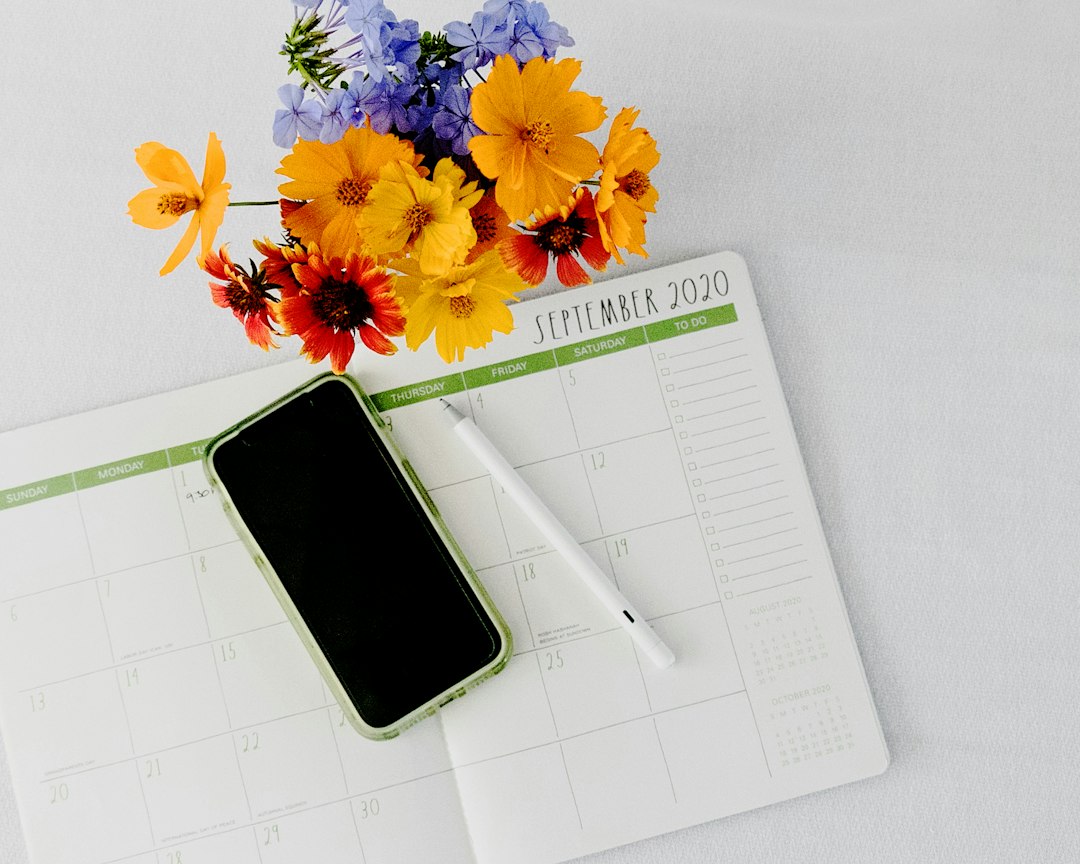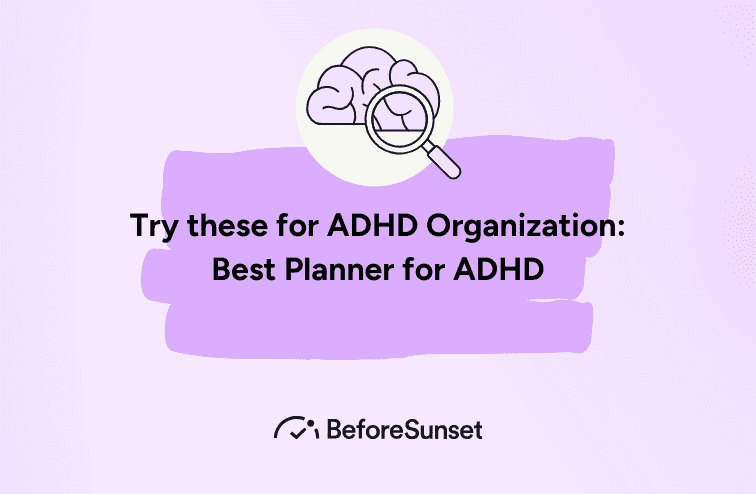Living with Attention Deficit Hyperactivity Disorder (ADHD) can present unique challenges, especially when it comes to organization and time management. Individuals with ADHD often find it difficult to keep track of tasks, appointments, and deadlines.
However, using the right planner tailored to the needs of someone with ADHD can make a significant difference. This blog explores the best planner for ADHD, designed specifically to help those with ADHD enhance their organizational skills and boost productivity.
With features like simplified layouts, visual cues, and customizable options, these planners can become a crucial tool in managing daily life more effectively. Whether you're a student, a professional, or someone looking to improve their time management skills, finding the right planner can be a game-changer in achieving your goals and staying on top of your responsibilities.
You may also like:
Understanding ADHD and the Importance of Organization in Time Management

Overview of ADHD
Attention Deficit Hyperactivity Disorder (ADHD) is a neurodevelopmental disorder characterized by patterns of hyperactivity, impulsivity, and inattention that can significantly impact daily functioning and overall quality of life.
Individuals with ADHD may have difficulty managing their time, organizing tasks, and following through on projects. As a result, it's possible to miss deadlines, forget meetings, and generally feel overburdened with daily obligations.
Understanding ADHD is the first step towards finding effective strategies and tools to cope with its symptoms, specifically in terms of organization and time management.
Relationship between ADHD and organization
The relationship between ADHD and organization is a complex one. Due to the nature of ADHD, individuals often find it challenging to prioritize tasks, manage their time efficiently, and maintain an organized environment. This can lead to a cycle of procrastination, last-minute rushes, and inevitable stress. Organization and time management do not come easily to those with ADHD, but with the right strategies and tools, it is possible to establish a more structured approach to daily tasks and responsibilities. Incorporating organization strategies that complement ADHD can turn perpetual disarray into manageable systems, significantly reducing stress and improving productivity.
Benefits of using planners for individuals with ADHD
Planners can be incredibly beneficial for individuals with ADHD. These tools can help in:
Breaking down tasks into manageable steps
Establishing a visual representation of time
Prioritizing daily, weekly, and monthly tasks
Reducing the likelihood of forgotten tasks and appointments
Creating a routine and structure that can mitigate feelings of being overwhelmed
By visualizing tasks and their deadlines, individuals can avoid the pitfalls of out-of-sight, out-of-mind forgetfulness that often plague those with ADHD. Moreover, a planner can act as a central location for all task-related information, reducing the mental load and freeing up cognitive resources for task execution.
Criteria for Selecting the Best Planners for ADHD
Importance of structure and flexibility
When choosing a planner for someone with ADHD, it's essential to find a balance between structure and flexibility. A planner should provide enough structure to guide daily and weekly planning but also allow flexibility for the user to tailor it to their specific needs. The aim is to create a sense of routine without feeling constrained by overly rigid planning systems. Planners that offer customizable sections, undated pages, or the option to add and remove pages can be especially beneficial for adapting to the changing needs and preferences of someone with ADHD.
Features to look for in a planner for ADHD
When selecting a planner suitable for someone with ADHD, consider the following key features:
Clear, clutter-free layout: Look for a planner with a simple, easy-to-navigate design that minimizes distractions.
Space for prioritization: Ensure there is ample space to list tasks and prioritize them in order of importance.
Monthly, weekly, and daily views: This provides a high-level overview of what’s coming up, along with detailed day-to-day task planning.
Reminders for breaks and self-care: People with ADHD often benefit from built-in reminders to take short breaks and practice self-care, helping manage stress and maintain focus.
Time-blocking sections: Ideal for managing hyperfocus, time-blocking sections help allocate specific periods for tasks, reducing the likelihood of time slipping away unnoticed.
Visual cues: Color-coding, stickers, or highlighters can aid in distinguishing between different types of tasks and appointments, making the planner more intuitive to use.

For individuals with ADHD, a planner can be an essential organizational tool, but only if it's utilized effectively. The benefits of a planner extend beyond merely scheduling appointments or tasks. It can help manage time, increase productivity, and even alleviate some of the stress and anxiety often associated with ADHD. Below are strategies to maximize the potential of your planner and enhance your organizational skills.
Setting realistic goals and expectations
One of the primary keys to succeeding with a planner when you have ADHD is to set realistic goals and maintain reasonable expectations. Overloading your planner with tasks or setting overly ambitious goals can lead to frustration and a sense of failure. Start by:
Breaking larger tasks into smaller, manageable steps. This makes them less overwhelming and easier to accomplish.
Prioritizing tasks based on importance and deadlines. Not everything needs to be done immediately.
Acknowledging and accepting your limits. Understand that everyone has productive days and off days. Planning too much on your off days can lead to failure and disappointment.
Including buffer times for transitions between tasks. People with ADHD often underestimate how much time activities will take, so adding extra time can be helpful.
Remember, the goal is progress, not perfection. Your planner is a tool to help you manage your time and tasks better, not a yardstick to measure your worth or abilities.
Incorporating routines and reminders
Routines and reminders are especially important for individuals with ADHD. These can help in reducing the mental load of having to remember every detail and commitment. Effective ways to incorporate these into your planner system include:
Establishing morning and evening routines and writing them down in your planner. These routines can act as bookends to your day, ensuring you start and finish your day productively.
Setting reminders for appointments, deadlines, and tasks. This can involve setting alarms on your phone or using digital calendar alerts alongside your physical planner.
Using color-coded stickers or symbols for different types of activities or reminders. This can make your planner visually appealing and easier to scan for important information.
Reviewing and updating your planner at a set time each day. This can help make it a habit to rely on your planner as your central organizational tool.
Routines and reminders can significantly decrease the chances of missing appointments or forgetting tasks, making them crucial for effective ADHD organization.
Making adjustments based on feedback and progress
Adaptability is key when using a planner for ADHD. What works for someone else might not work for you, and what works now might need adjustment later. Regularly assess your planner and your progress, and don’t hesitate to make changes based on what you discover about your habits and preferences. Consider the following:
If you find certain types of tasks consistently don’t get completed, reevaluate how you’re scheduling them or if you need to break them down further.
If you realize you’re consistently overestimating or underestimating the time tasks will take, adjust your planning accordingly. This might involve changing how you block out time or using different techniques to estimate task durations.
Regularly check if the layout, format, or type of planner is still serving you well. It’s okay to switch things up if you find something that might work better.
Feedback, whether from yourself or others, is an invaluable resource for fine-tuning how you use your planner. Embrace adjustments as part of the process of finding the best system that supports your unique needs and lifestyle.
Conclusion
In conclusion, managing ADHD requires effective planning and organization, and BeforeSunset AI is here to simplify the process. By harnessing the power of AI and intuitive design, BeforeSunset AI empowers individuals with ADHD to take control of their schedules, enhance productivity, and achieve their goals with confidence. Don't let ADHD hold you back; embrace the power of BeforeSunset AI and unlock your full potential today.


